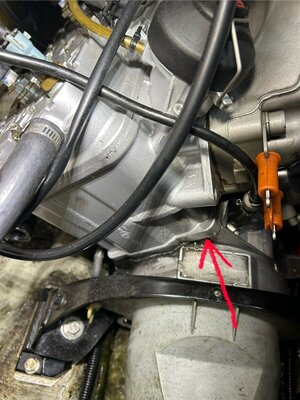CoolHandJohnny
Member
I’ve got a 2002 Seadoo GTX RFI. I had a rebuilt motor installed a couple years ago.It’s been running great until last weekend. It was hard to start but when I finally got it started I had to keep the throttle pressed in slightly or it would die. It ran great except for when at throttle. I got it home and there was some water on the spark plugs. I got the water out and it fired right up. I turned on the hose and then in 20 seconds it dies and once again water on the spark plugs. I also noticed water coming out of this area where the arrow is pointing in the attached picture. I also can tell this connection is very loose. When the motor is running, I can see it move slightly. I’m not a mechanic but I know that isn’t right. How do I go about tightening this back up? I’ve spent way too much money on this ski so I’d like to do the work myself instead of taking it to the dealership again. I’ve been looking for some kind of instructions but can’t find anything online. Any help would be great. Thanks in advance.




